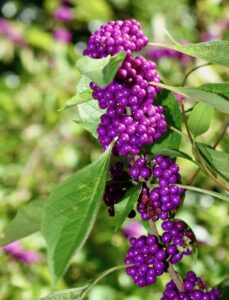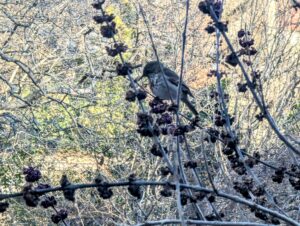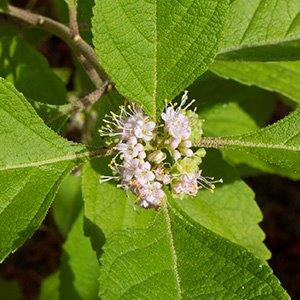One of the Many Reasons I Love American Beautyberry . . .
go.ncsu.edu/readext?975691
en Español / em Português
El inglés es el idioma de control de esta página. En la medida en que haya algún conflicto entre la traducción al inglés y la traducción, el inglés prevalece.
Al hacer clic en el enlace de traducción se activa un servicio de traducción gratuito para convertir la página al español. Al igual que con cualquier traducción por Internet, la conversión no es sensible al contexto y puede que no traduzca el texto en su significado original. NC State Extension no garantiza la exactitud del texto traducido. Por favor, tenga en cuenta que algunas aplicaciones y/o servicios pueden no funcionar como se espera cuando se traducen.
Português
Inglês é o idioma de controle desta página. Na medida que haja algum conflito entre o texto original em Inglês e a tradução, o Inglês prevalece.
Ao clicar no link de tradução, um serviço gratuito de tradução será ativado para converter a página para o Português. Como em qualquer tradução pela internet, a conversão não é sensivel ao contexto e pode não ocorrer a tradução para o significado orginal. O serviço de Extensão da Carolina do Norte (NC State Extension) não garante a exatidão do texto traduzido. Por favor, observe que algumas funções ou serviços podem não funcionar como esperado após a tradução.
English
English is the controlling language of this page. To the extent there is any conflict between the English text and the translation, English controls.
Clicking on the translation link activates a free translation service to convert the page to Spanish. As with any Internet translation, the conversion is not context-sensitive and may not translate the text to its original meaning. NC State Extension does not guarantee the accuracy of the translated text. Please note that some applications and/or services may not function as expected when translated.
Collapse ▲I love American Beautyberry, Callicarpa americana, because birds like it, but they do not love it.
This means they don’t bother the berries in the fall when they are ripe and beautiful, leaving them a gorgeous focal point in the landscape.

Cathy Dewit, CC-BY 4.0
But in the winter, when the berries are dried, and other food sources are scarce, birds come to the feast, providing action, interest, and beauty to the winter garden.

Lucy Bradley CC0
It is a three-season plant in the garden with delicate flowers in the spring, spectacular berries in the fall, and a magnet for birds in the winter.

Debbie Roos, CC BY 2.0
Learn more about Callicarpa americana on the Extension Gardener Plant Database


